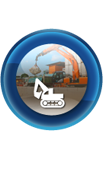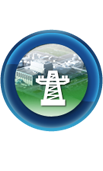INFO COMMUNICATIONS TECHNOLOGY
Thanks to infocomm technologies, our world is smaller than ever before, and opportunities have never been bigger. Tap into the rich resource of infocomm technologies and get up to speed with the world.
Sources: 1. Pioneering New Frontiers – A Century of Hitachi's Progress, page 146 2. Historical Computers in Japan - Supercomputers
From as early as the year 2000, Singapore Epson Industrial (SEP) had employed the JP1/AJS2 job management system, but its use was limited to the product costing application. Job management tasks were performed manually, and because SEP uses a portfolio of applications deployed on several IBM® iSeries® servers and Intel®-based servers running Windows NT®, 2000 and later operating systems, considerable amounts of labor and time were spent on job allocation, especially for those jobs that involve both the OS/400 and Windows platforms. From as early as the year 2000, Epson Industrial (SEP) had employed the JP1/AJS2 job management system, but its use was limited to the product costing application. Job management tasks were performed manually, and because SEP uses a portfolio of applications deployed on several IBM® iSeries®servers and Intel®-based servers running Windows NT®, 2000 and later operating systems, considerable amounts of labor and time were spent on job allocation, especially for those jobs that involve both the OS/400 and Windows platforms.
In addition, there was no clear view of job status and each job had to be manually tracked. Causes of job failure were also difficult to pinpoint and problem resolution and job restoration involved laborious checking of log files on servers and interruption of end-user operations and even shopfloor activities.
The solution arrived in 2002 in the shape of JP1/OJE. Working in tandem with JP1/AJS2 for mid-range computers, such as the iSeries, SEP had central control of both native and cross-platform jobs. Jobs that were previously managed individually and synchronized manually became managed as part of a constellation, with triggers, start times and other execution details configured into the jobnet.
Unlike before, the ISD team now has a singular, concise, graphical view of all jobs. Team members and their end-user colleagues are notified of job completion or failure via an auto-generating email system, so much less time is spent monitoring jobs. Together with other features, these allow SEP to manage jobs by exception, with human intervention needed only when jobs are interrupted by hardware or application/system software hiccups. And even when these hitches happen, they are diagnosed and resolved in about 80% less time than before.
The high degree of job automation, including the ability to schedule jobs to run after office hours or over the weekend, has also enabled SEP to eliminate overtime and slash the man-hours spent on job management by 75%.
Future IT plans
With its back-end now much more stable and streamlined than before, SEP plans to route even more jobs through JP1/AJS2 when it deploys new business applications in future. Also on the drawing board are plans to consolidate its applications on fewer or blade servers, and deliver information to end-users and management via a business intelligence solution.
With JP1/AJS2, SEP is able to centrally define, schedule, execute all jobs that run over the different platforms. JP1/AJS2 offers a very high degree of automation and visibility of job status is always clear. This has resulted in a tighter meshing of mission-critical applications, better and more timely flow of information to end-users, and swift resolution of problems, among other benefits.





